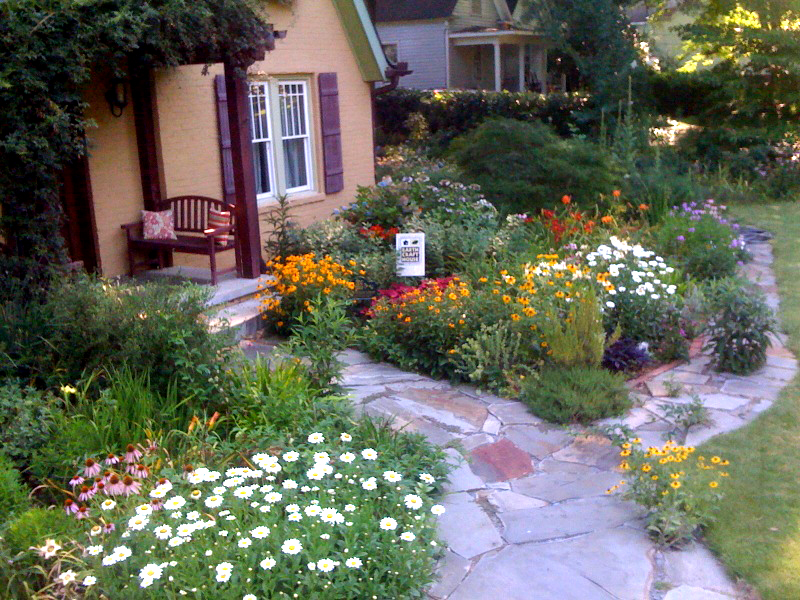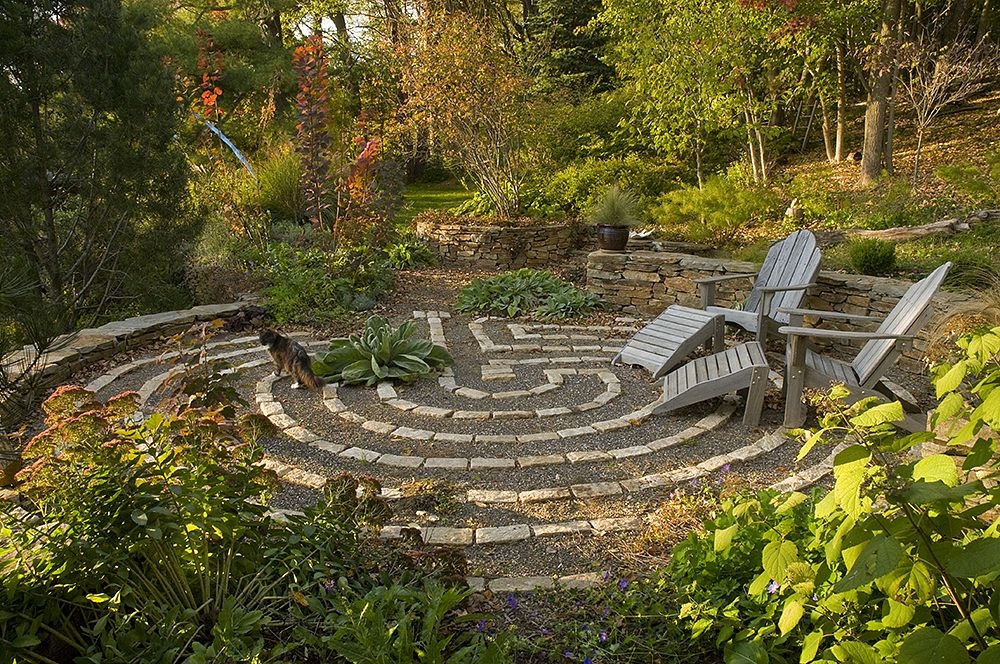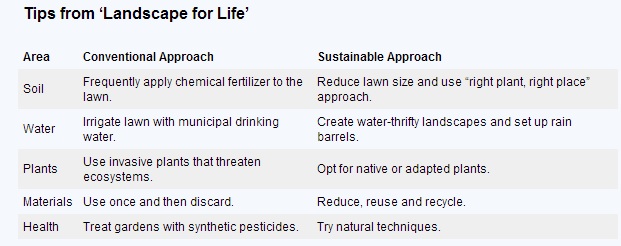Living Lightly on the Land
by Lynn Kirk, Public Relations Writer, Lewis Ginter Botanical Garden, reprinted with permission from the Richmond Times-Dispatch

Native plants that attract pollinators better support nature’s ecosystems than expanses of high-maintenance lawns. Photo by Geraldine A. Laufer.
Plants might be dormant this time of year, but gardeners don’t have to be. Now is the time to plan spring gardens and landscapes. It’s also an opportunity to pause for a reality check: How are you affecting the environment?
Expansive, manicured lawns might be prized by some, but what are the long-term consequences of chemical fertilizers and pesticides?
Tree removal might seem necessary when extending the landscape, but how will it affect wildlife?
Concrete patios and paved driveways can seem welcoming, but how do hardscapes manage rainwater runoff?
Underground irrigation systems might be handy, but why use potable water?
These practices can interrupt natural processes designed to reduce flooding, clean the air and water, provide havens for wildlife and combat climate change. When these natural “ecosystem services” are destroyed, our attempts to undo the damage often demand even more resources, time and money.
“Homeowners need to understand how they can garden and work with nature instead of against nature,” explained Ray Mims, a horticulturist who specializes in plant conservation and sustainability at the U.S. Botanic Garden. “We want to mimic what nature does well and repair what man has interrupted or destroyed.”
Sustainable gardening is not only possible but also critical, Mims said. “The new way of gardening is actually old. We got away from nature, but now we’re going back to the practices done by our grandparents.”

Unlike a paved walkway, pervious gravel allows rainwater to infiltrate the soil without sacrificing artistic elements. Photo by Margo Taylor.
The movement is supported by “Landscape for Life,” a five-class series that teaches homeowners how to harness nature’s power while creating healthy, beautiful home gardens and landscapes. The seminars compare conventional practices with sustainable solutions and provide practical tips on how to live lightly on the land.
The program is a collaboration of the U.S. Botanic Garden and the Lady Bird Johnson Wildflower Center. “Landscape for Life” is offered across the country and locally at Lewis Ginter Botanical Garden.
“We need to try and look at things differently,” Mims said. “Even doing small changes can collectively make a real difference over time.”
Following are excerpts from the ‘“Landscape for Life” program, which explores sustainability options in five key areas: soil, water, plants, materials and health.

Lewis Ginter Botanical Garden’s Landscape for Life class will return this spring, with classes meeting on April 28th, May 1st, 3rd, 8th, & 10th. Monday & Thursdays, the class meets from 6:30-8:30 p.m., and Saturday it meets from 9 a.m. to noon. Registration will open Dec. 4th, from a link on the Garden’s Adult Education website.
Editor’s Note: This article first published in the Richmond Times-Dispatch, in November 2013.